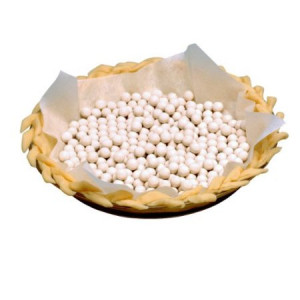Asparagus
Nothing quite says spring like asparagus, which has a rather short season, which is typically from February to June.
Thickness really has nothing to do with quality. Asparagus is a perennial; more mature plantings tend to yield thicker stalks, and any size will be tender as long as it’s freshly cut. Look for bright apple green spears and tightly closed purplish heads; the stalks should be glossy, firm, and unwrinkled, with just a little white toward the base.
The question that many people have about Asparagus is whether to peel or not to peel. I believe it is quite unnecessary, and for the effort, it just doesn’t make noticeably more asparagus flesh available for eating. Instead, bend the cut end of each spear, snapping off the woody part where it breaks naturally (usually about two-thirds of the way down the stalk). The balance of the spear will be tender to the bite.
Extend the freshness of asparagus by keeping the spears hydrated. When you get the asparagus home from the market, trim the bottom 1/2 inch or so from each stem, and stand the bunch upright in a large coffee cup. Add water just to cover the ends of the stems, and then cover the top of the bunch with a plastic bag. Or you could trim 1/2 inch off the base of the stalks, wrap the bottoms in a damp paper towel, and slip the spears into a plastic bag, leaving the bag open. In either case, make sure to refrigerate the asparagus, adding more water to the cup or dampening the paper towel as needed. The asparagus should stay fresh for up to 3 days.
“Work With What You Got!”
© Victoria Hart Glavin Tiny New York Kitchen
 Pre-Baked Pie Crust: Five Steps For A Perfect Pie Crust
Pre-Baked Pie Crust: Five Steps For A Perfect Pie Crust
A pre-baked pie crust (sometimes called a blind baked pastry case) is one that has been partially baked without a filling so it can still cook and crisp thoroughly if the filling needs a shorter time to bake than the pastry. Pre-baking a pie crust also stops the pastry from getting soggy by a moist filling.
- Prick the base of the pie crust all over with a fork to stop the pastry from bubbling up and getting out of shape.
- Chill the pie crust in the refrigerator for at least 15 minutes before baking. This will stop it from shrinking during baking. Preheat your oven to 350º F.
- Place a large piece of parchment paper inside the pie crust, then fill with baking beans or uncooked rice. Ceramic beans or pie weights are available from most cooking stores or Amazon. Make sure that the paper is touching the pastry, eve at the edges.
- Bake for 10 to 15 minutes for a large pie crust or 8 to 10 minutes for a small one until the pastry is cooked and opaque.
- Carefully remove the parchment paper and the beans/rice/weights and then return the empty pie crust back in the oven for 10 minutes for a large pie crust or 4 to 5 minutes for a small one. When it is ready the base will be a sandy color, dry and crisp. The top edges of the pie crust should be golden. Leave in the pie tin or pie plate and continue with your chosen recipe.








